Most people could read extra lines on eye test charts after using the drops

Part of growing older is realising things that happened to ‘old’ people now are happening to you. For example, the classic middle-age (pre-reading glasses) technique of moving a mobile phone or book further away so that you can focus on it properly.
I’ve noticed my wife, who is the same age as me, doing this—and recently, I’ve notice it can take me a second to focus, too. Unlike her, I wear contact lenses, so requiring reading glasses will mean some kind of varifocal solution. While multifocal contact lenses exist, I can imagine this approach would be much better.
Hundreds of millions of people worldwide have presbyopia, which is when the eyes find it difficult to focus on objects and text up close. Glasses or surgery can usually resolve the problem but many find wearing spectacles inconvenient and having an operation is not an option for everyone.
Now experts say the solution could be as simple as using eye drops twice a day.
A study presented on Sunday at the European Society of Cataract and Refractive Surgeons (ESCRS) in Copenhagen showed that most people could read extra lines on eye test charts after using the drops. The improvement was sustained for two years.
[…]
The drops contain pilocarpine, a drug that constricts the pupils and contracts the muscle that controls the shape of the eye’s lens to enable focus on objects at different distances, and diclofenac, a non-steroidal anti-inflammatory drug (NSAID) that reduces inflammation.
“Impressively, 99% of 148 patients in the 1% pilocarpine group reached optimal near vision and were able to read two or more extra lines.”
Source: The Guardian
Image: Blaz Photo
These images are made from open access sources, and they are themselves open access
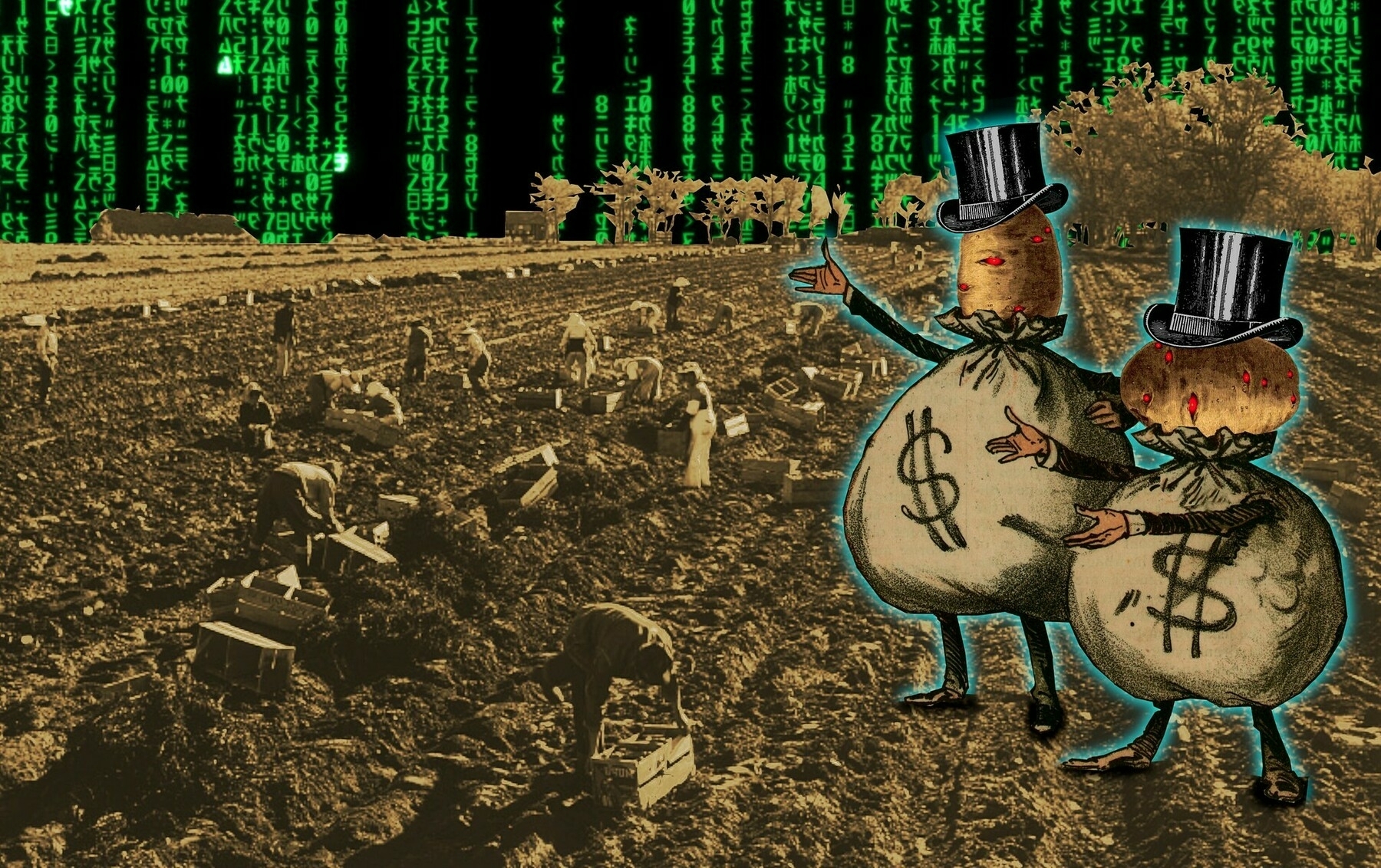
For the last few years, in the time between Christmas and New Year, I’ve created a collage using issues of The Guardian Weekly and any other magazines I’ve found (example). Cory Doctorow, who makes everyone feel like an underperformer, creates one every day.
Thankfully, he also believes in open working and sharing, meaning we all get to use them under a permissive license) (in this case, CC BY-SA). He’s also collated his favourites into a limited-edition book. Because of course he has.
_ Canny Valley_ collects 80 of the best collages I’ve made for my Pluralistic newsletter, where I publish 5-6 essays every week, usually headed by a strange, humorous and/or grotesque image made up of public domain sources and Creative Commons works.
These images are made from open access sources, and they are themselves open access, licensed Creative Commons Attribution Share-Alike, which means you can take them, remix them, even sell them, all without my permission.
I never thought I’d become a visual artist, but as I’ve grappled with the daily challenge of figuring out how to illustrate my furious editorials about contemporary techno-politics, especially “enshittification,” I’ve discovered a deep satisfaction from my deep dives into historical archives of illustration, and, of course, the remixing that comes afterward.
Source: Pluralistic
Image: CC BY-SA Cory Doctorow
A 10y old phone can barely load google, and this is about 100x slower

If you visit dougbelshaw.com you will notice that the site loads instantly, no matter the speed of your connection or which device you’re on. That’s because it’s a mere 7.7kB in size. I did have it under 1kB, but I added a JavaScript effect, and a favicon.
That means that I could host this website on pretty much anything I choose — including, it turns out, a vape. That’s right, the microcontroller running inside a disposable vape is about the same clock speed as early 1990s personal computers. While they had more RAM and storage space, landfill considerations aside, it’s pretty incredible that someone has managed to run a website from things that are being used as fancy “pacifier for adults.”
I’m not here to scold anyone, but we’re so used to autoplaying videos these days, even on news sites, that we don’t question the impact that’s having on the energy consumption of the world. Combined with an increasing amount of dark data and perhaps it’s time to consciously minimise our digital footprints? Also, it’s cool to be able to host your website yourself on something like a vape. Much cooler than using them for their intended purpose!
For a couple of years now, I have been collecting disposable vapes from friends and family. Initially, I only salvaged the batteries for “future” projects (It’s not hoarding, I promise), but recently, disposable vapes have gotten more advanced. I wouldn’t want to be the lawyer who one day will have to argue how a device with USB C and a rechargeable battery can be classified as “disposable”. Thankfully, I don’t plan on pursuing law anytime soon.
Last year, I was tearing apart some of these fancier pacifiers for adults when I noticed something that caught my eye, instead of the expected black blob of goo hiding some ASIC (Application Specific Integrated Circuit) I see a little integrated circuit inscribed “PUYA”. I don’t blame you if this name doesn’t excite you as much it does me, most people have never heard of them. They are most well known for their flash chips, but I first came across them after reading Jay Carlson’s blog post about the cheapest flash microcontroller you can buy. They are quite capable little ARM Cortex-M0+ micros.
Over the past year I have collected quite a few of these PY32 based vapes, all of them from different models of vape from the same manufacturer. It’s not my place to do free advertising for big tobacco, so I won’t mention the brand I got it from, but if anyone who worked on designing them reads this, thanks for labeling the debug pins!
[…]
So here are the specs of a microcontroller so bad, it’s basically disposable:
- 24MHz Coretex M0+
- 24KiB of Flash Storage
- 3KiB of Static RAM
- a few peripherals, none of which we will use.
You may look at those specs and think that it’s not much to work with. I don’t blame you, a 10y old phone can barely load google, and this is about 100x slower. I on the other hand see a blazingly fast web server.
Source: BogdanTheGeek’s Blog
Image: modified from original included in source blog posts (using Dither It!)
Secure backups let you save an archive of your Signal conversations in a privacy-preserving form
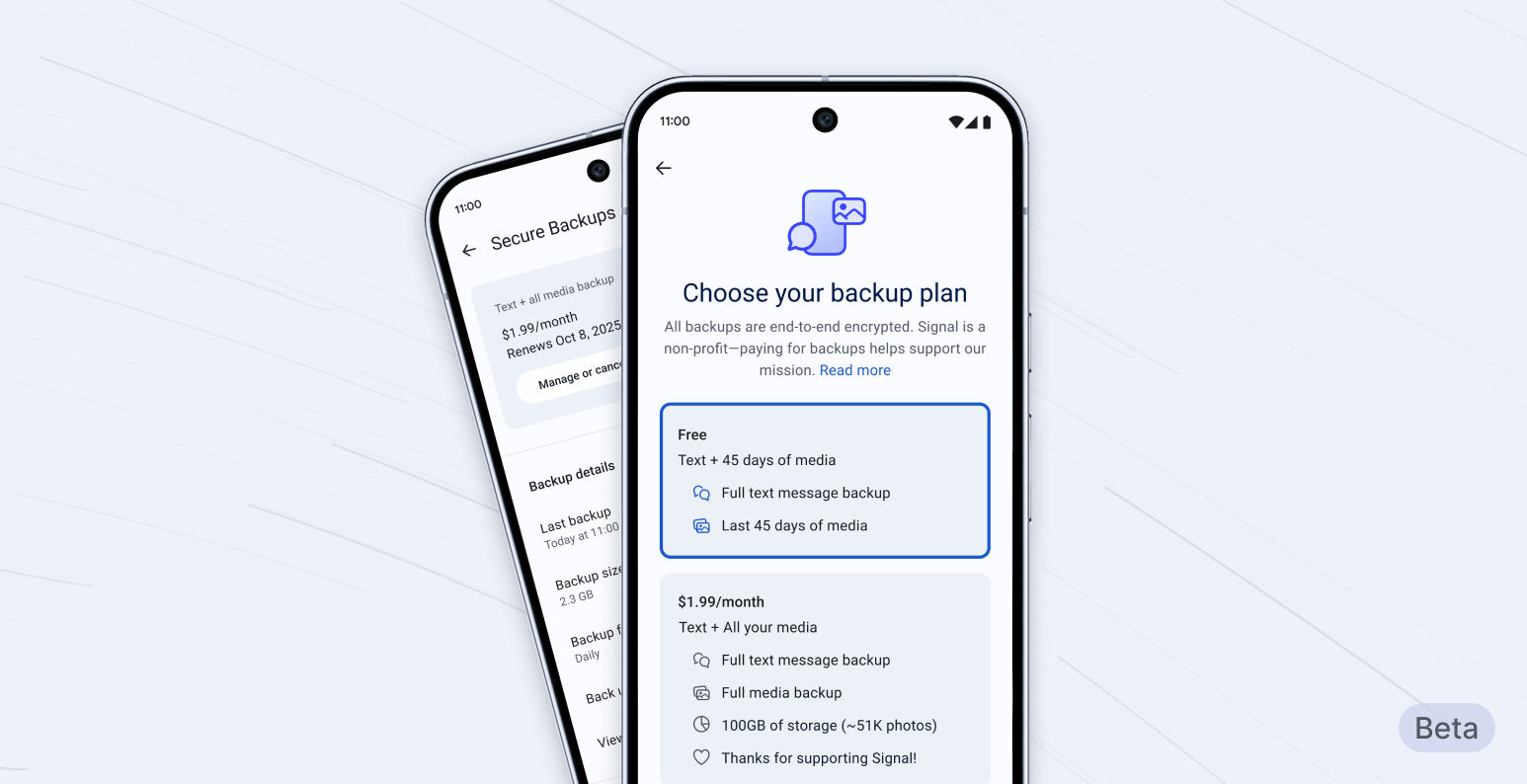
Recently, my Dad upgraded his iPhone and needed to move all of his apps from one phone to another. As anyone has done this will know, messages from encrypted messaging services such as WhatsApp and Signal usually have to be backed-up and then restored separately to the rest of the app transfer.
WhatsApp makes this easy, but much less secure, by allowing users to back up to Google Drive or iCloud. This is, by default, not encrypted, so it’s an easy vector for hackers and state-level actors to target. Signal, on the other hand, requires either device-to-device transfer of messages, or manual backup and restore.
Signal has just announced secure backups, which is a major step forward. After all, while you could regularly auto-backup Signal chats to local storage, if you lost or broke your phone, those messages were irretrievably lost.
After careful design and development, we are now starting to roll out secure backups, an opt-in feature. This first phase is available in the latest beta release for Android. This will let us further test this feature in a limited setting, before it rolls out to iOS and Desktop in the near future.
[…]
Secure backups let you save an archive of your Signal conversations in a privacy-preserving form, refreshed every day; giving you the ability to restore your chats even if you lose access to your phone. Signal’s secure backups are opt-in and, of course, end-to-end encrypted. So if you don’t want to create a secure backup archive of your Signal messages and media, you never have to use the feature.
[…]
This is the first time we’ve offered a paid feature. The reason we’re doing this is simple: media requires a lot of storage, and storing and transferring large amounts of data is expensive. As a nonprofit that refuses to collect or sell your data, Signal needs to cover those costs differently than other tech organizations that offer similar products but support themselves by selling ads and monetizing data.>
[…]
Once you’ve enabled secure backups, your device will automatically create a fresh secure backup archive every day, replacing the previous day’s archive. Only you can decrypt your backup archive, which will allow you to restore your message database (excluding view-once messages and messages scheduled to disappear within the next 24 hours). Because your secure backup archive is refreshed daily, anything you deleted in the past 24 hours, or any messages set to disappear are removed from the latest daily secure backup archive, as you intended.
Source & image: Signal blog
The FBI announced the alleged shooter’s apprehension with a quote from Mad Max
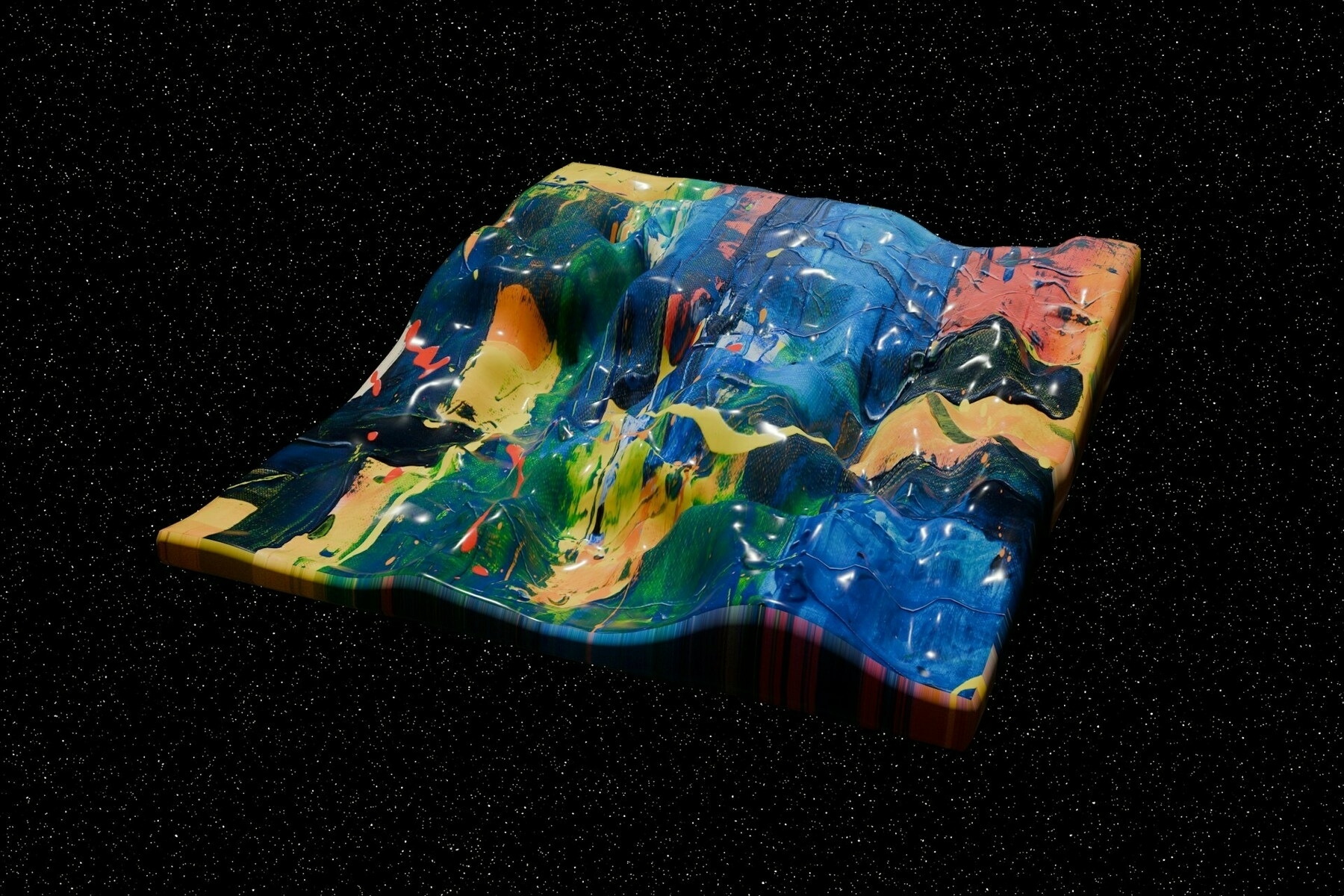
I’m not going to comment on the death of Charlie Kirk, but I would like to point to Garbage Day, the newsletter by Ryan Broderick which I quote regularly here on Thought Shrapnel. For me, it’s an essential aid to understand the world as it is today.
Another newsletter called Today in Tabs summarised the Garbage Day post I’m going to cite here the following way:
So in summary: it appears that this was a shooting where the victim, an influencer, was answering a question from another influencer when he was shot by a third influencer, after which a fourth influencer documented the ensuing chaos and a host of other influencers registered their takes, before the director of the FBI (an influencer) and the deputy director of the FBI (another influencer) announced the alleged shooter’s apprehension with a quote from Mad Max.
This is the way the world is today: confusing, and extremely online.
The Garbage Day post is therefore really useful and insightful. It explains terms such as “groyper” that I haven’t come across before and, as the father of an 18 year-old boy (man!), these are things it’s important to know about and discuss/share with teenagers. Well worth a read.
It’s also possible [suspect Tyler] Robinson genuinely believes in antifascist principles. But his alleged use of random internet brainrot is notable. Many extremism researchers this morning are wondering if Robinson is a self-identified “groyper,” or follower of far-right streamer Nick Fuentes. As we wrote yesterday, Fuentes has spent years attacking Kirk online. Groypers believed that Kirk was a sellout and blocking a much more extreme version of Trumpism from taking root. For years, Groypers have been carrying out what they call “Groyper Wars,” attending Kirk’s events and trying to disrupt them. For what it’s worth, 4chan users think Robinson was a Groyper.
Source: Garbage Day
Image: Steve Johnson
There's nothing they can do with the information

In general, there’s a difference between “being an informed citizen” and “being a news junkie.” Due to the fact that most people now get their ‘news’ via social media, and social networks are mostly algorithmic, there is often an emotional and/or partisan filter through which people obtain information. This is not good for our individual or collective mental health.
As a result, record numbers of people—including me— are limiting the amount of news they consume. Or at least how they consume it. I’ve even mostly stopped listening to The Rest is Politics, formerly one of my favourite podcasts. As this article points out, you have to be able to do something with the information you receive.
Globally, news avoidance is at a record high, according to an annual survey by the Reuters Institute for the Study of Journalism published in June. This year, 40% of respondents, surveyed across nearly 50 countries, said they sometimes or often avoid the news, up from 29% in 2017 and the joint highest figure recorded.
The number was even higher in the US, at 42%, and in the UK, at 46%. Across markets, the top reason people gave for actively trying to avoid the news was that it negatively impacted their mood. Respondents also said they were worn out by the amount of news, that there is too much coverage of war and conflict, and that there’s nothing they can do with the information.
[…]
Studies suggest that increased exposure to news – particularly via television and social media, and especially coverage of tragic or distressing events – can take a toll on mental health.
[…]
A growing body of advice online promotes healthier ways to consume news. Much of it focuses on creating guardrails so people can be deliberate about finding information when they’re ready for it, instead of letting it reach them in a constant stream. This might include signing up for newsletters or summaries from trusted sources, turning off news alerts and limiting social media.
Source: The Guardian
Image: Buddy AN
99.9% of opinions on the internet don’t matter
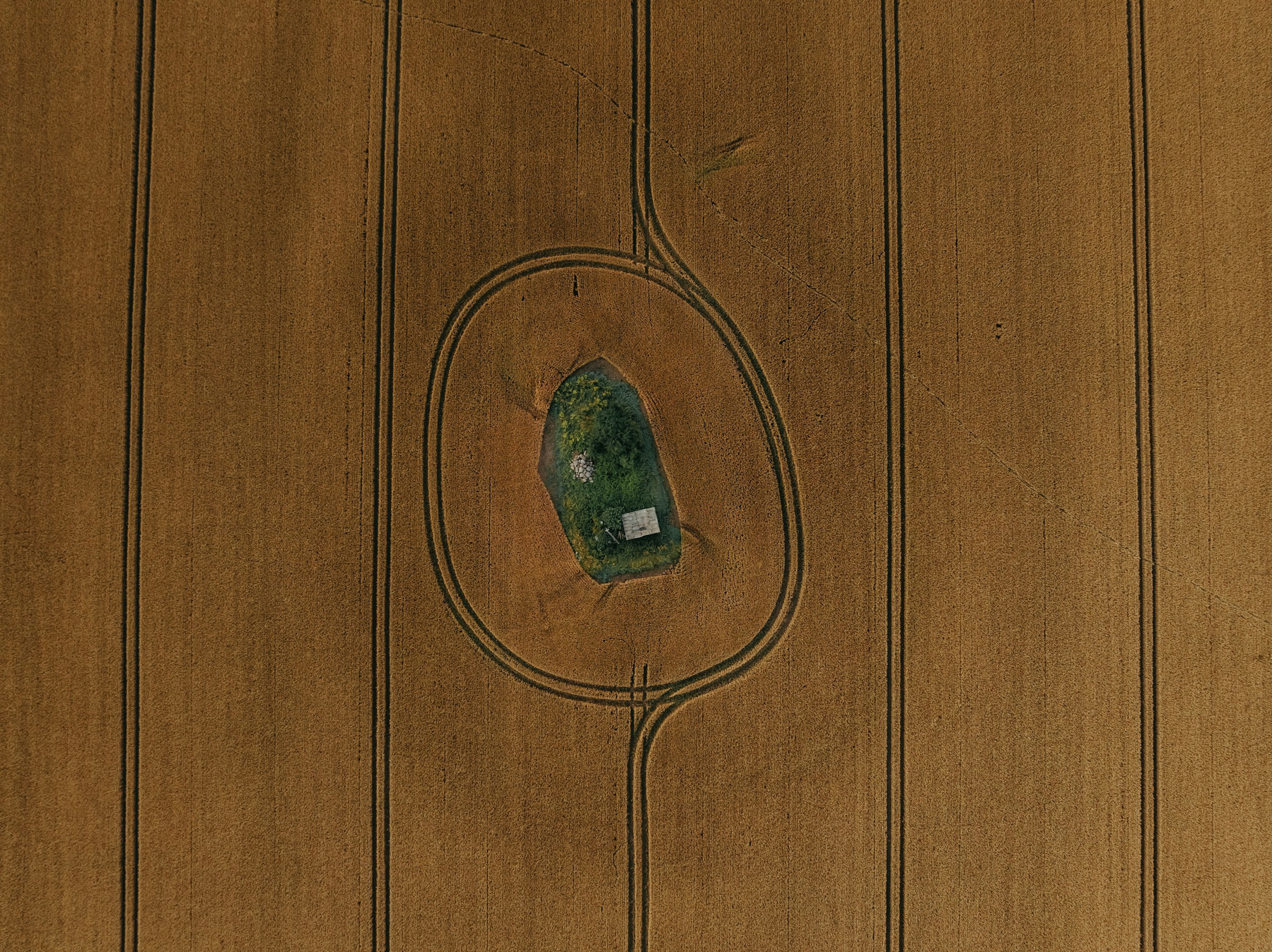
Good stuff, as ever, from Jay Springett. He’s ostensibly talking about arguing on the internet, but this post is really about identity. Your identity might be reflected in the things you do or like, but this does not comprise the sum total of that identity.
Now, I get it, I totally do. I understand that when ones identity has been so completely ‘formatted’ by social platforms and consumer capitalism that an attack on a media property, tv show, album, podcast, game, book, football team or whatever, feels like an attack on your own identity as a person. One can’t help feel the need to go to war, to protect yourself. You aren’t the media you consume, and media properties aren’t your friends. Why argue or care about if genre fiction “is real literature” or not? I suspect its because people feel like they need validation for their choice of media diet? Validation for the amount of time and energy one has spent putting ones attention towards a certain interest. This need for validation results in people expressing their taste online, not by sharing what they love, but by fighting with someone who doesn’t.
[…]
There is a fundamental truth about the internet, and it also applies to building/having an audience: 99.9% of opinions on the internet don’t matter. You don’t know these people, and they don’t know you. Other peoples approval won’t keep you warm but the perceived lack of it will keep you awake at night. Their disapproval also shouldn’t stop you from loving the thing. You don’t need anyones approval to post on the internet, you can just do things, and like stuff.
The only people whose opinions really matter in this world are the ones expressed from across the table. From your family and friends over dinner. The people in your life who’ll ask your recommendations because they know that your taste is your own.
Source: thejaymo
Image: Kristaps Ungers
An open, decentralised protocol making clear to AI crawlers and agents the terms for licensing, usage, and compensation
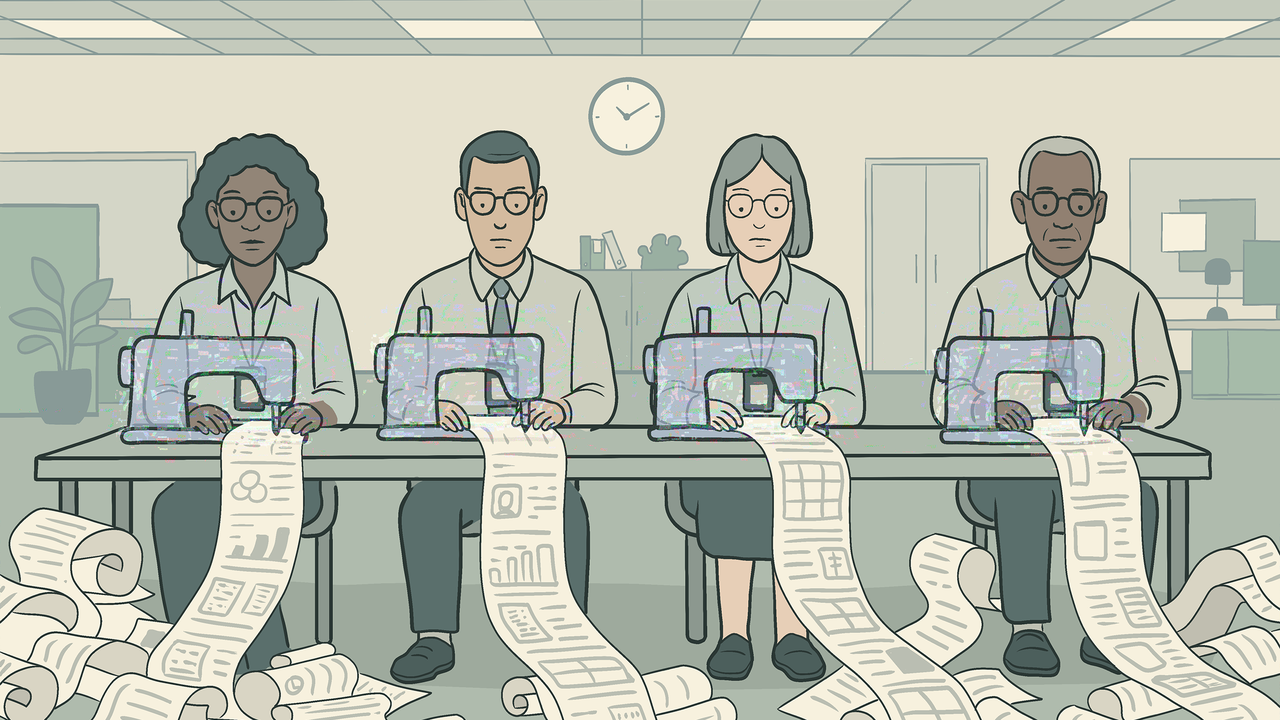
Announced Wednesday morning, the “Really Simple Licensing” (RSL) standard evolves robots.txt instructions by adding an automated licensing layer that’s designed to block bots that don’t fairly compensate creators for content.
Free for any publisher to use starting today, the RSL standard is an open, decentralized protocol that makes clear to AI crawlers and agents the terms for licensing, usage, and compensation of any content used to train AI, a press release noted.
The standard was created by the RSL Collective, which was founded by Doug Leeds, former CEO of Ask.com, and Eckart Walther, a former Yahoo vice president of products and co-creator of the RSS standard, which made it easy to syndicate content across the web.
Based on the “Really Simple Syndication” (RSS) standard, RSL terms can be applied to protect any digital content, including webpages, books, videos, and datasets. The new standard supports “a range of licensing, usage, and royalty models, including free, attribution, subscription, pay-per-crawl (publishers get compensated every time an AI application crawls their content), and pay-per-inference (publishers get compensated every time an AI application uses their content to generate a response),” the press release said.
[…]
Eckart [Walther, co-creator of RSS] had watched the RSS standard quickly become adopted by millions of sites, and he realized that RSS had actually always been a licensing standard, Leeds said. Essentially, by adopting the RSS standard, publishers agreed to let search engines license a “bit” of their content in exchange for search traffic, and Eckart realized that it could be just as straightforward to add AI licensing terms in the same way. That way, publishers could strive to recapture lost search revenue by agreeing to license all or some part of their content to train AI in return for payment each time AI outputs link to their content.
Source: Ars Technica
Image: Leo Lau & Digit
Be intentional with how you spend your time, and realise you actually have a surprising amount of it

As quoted in The Marginalian, writer Annie Dillard famously stated “How we spend our days is how we spend our lives.” The longer quotation, arguing in favour of adding structure and a schedule to your day goes like this:
How we spend our days is, of course, how we spend our lives. What we do with this hour, and that one, is what we are doing. A schedule defends from chaos and whim. It is a net for catching days. It is a scaffolding on which a worker can stand and labor with both hands at sections of time. A schedule is a mock-up of reason and order—willed, faked, and so brought into being; it is a peace and a haven set into the wreck of time; it is a lifeboat on which you find yourself, decades later, still living. Each day is the same, so you remember the series afterward as a blurred and powerful pattern.
Although he cites Tim Urban as an influence rather than Annie Dillard, this post by Nathan Brown makes a similar point. We have a finite amount of time on this earth, and finite number of hours available to us each week. A surprising number of these are discretionary—as in, whether it feels like it or not, we can choose how to use them.
I’m not a huge hustler. I’m not necessarily advocating that you spend your 52 hours/week building a startup or working an extra job. But I’m also an advocate for not being super lazy and sitting around and watching TikTok/YouTube all day.
I guess my point is to be intentional with how you spend your time, and to realize you actually have a surprising amount of it, once you account for all the essentials. What percentage of your discretionary time do you want to spend on…
- hanging out with friends
- bettering yourself
- outdoor activities
- volunteering
- creative expression (art, writing, etc.)
- entertainment
You choose—seriously. Not trying to guilt-trip you into anything. But I will be damned if I go through my life spending 10 of my discretionary hours/week watching Instagram Reels and then my gravestone says:
“Nathan was a kind, loving soul. His greatest achievement was watching 7,000,000 Instagram Reels.”
Source: Nathan Brown
Image: Resource Database
Grid-forming batteries will ultimately corner the stability market thanks to their inherent multifunctionality

As the UK moves steadily towards a fully-renewable future, one of the issues can be stabilising the power grid when electricity suddenly drops or spikes. Wind and solar energy can, after all, be unpredictable. Traditionally, fossil fuel power stations have helped with this stabilisation, but these are being shut down to cut emissions and fight climate change.
New ‘grid-scale’ batteries are being build which act like giant backup reservoirs for electricity. They store extra power when there’s a surplus (e.g. sunny days, windy nights) and then quickly release this to the grid whenever there’s an unexpected drop. As the battery doesn’t burn fuel or make pollution, it’s great for the environment, and the new technology is fast enough to fill the power gap nearly instantly.
Zenobē’s global director of network infrastructure, Semih Oztreves, predicts that grid-forming batteries will ultimately corner the stability market thanks to their inherent multifunctionality. While synchronous condensers mostly sit idle, waiting for a rare grid fault, Zenobē’s advanced batteries earn daily revenue by doing what most other storage sites do. For example, they arbitrage energy, absorbing power when it’s cheap and selling when supplies get tight.
But the short-circuit chops of grid-forming batteries haven’t yet faced a real-life test. Until then, doubts linger about whether transmission relays will respond appropriately to the inverters’ digitally defined surge of current. In a report last year for Australian grid operator Transgrid, one expert advised against overreliance on grid-forming inverters for short-circuit current, saying that it would carry “high to very high risk.” The utility later announced 10 synchronous condensers and 5 grid-forming batteries to bolster its grid.
Source & image: IEEE Spectrum
Your actions follow your self-beliefs

Something I say semi-regularly to friends and family is “people can only treat you the way you let them.” Inspired by quotations from Seth Godin and James Clear, this post is the other side of the coin. It’s about the way you treat yourself.
This year, I’ve had tests for a whole range of things. One by one I’ve discovered there’s nothing wrong with the structure of my heart, with my lungs, thyroid, adrenal glands—and I’m not anaemic. As the year has gone on, I’ve gotten slightly better, and then a lot better.
I’m still not fully right, as I can’t run or do some of the more intense physical things I used to do. But I’ve got a new self-image, one that’s perhaps more appropriate to the age I am. Not that I should expect less of myself, but that I should expect different things.
Your actions follow your self-beliefs.
If you identity as a failure, incapable of achievement, unfit, unlovable, destined to play a bit-part role in your own story, then by heck no matter how much willpower you put in to push that boulder up the hill, it will return to its place.
But there’s a way through: every action you take is a vote for who you wish to become. Every day you wake up, look your old identity in the eye and say “thanks for your service, but you’re not needed around here anymore,” step forward and lean in, is a day your new identity is built.
It takes time. You have to actually want it. You have to choose to adopt a new mindset. Rome wasn’t built in a day. But it comes, a little like how Hazel Grace Lancaster describes falling in love in The Fault In Our Stars: “slowly, and then all at once.”
The path is there, should you choose.
Source: @fredrivett
Image: chloe combs
Each of us is part of an interpretive community that gives us a particular way of reading a text
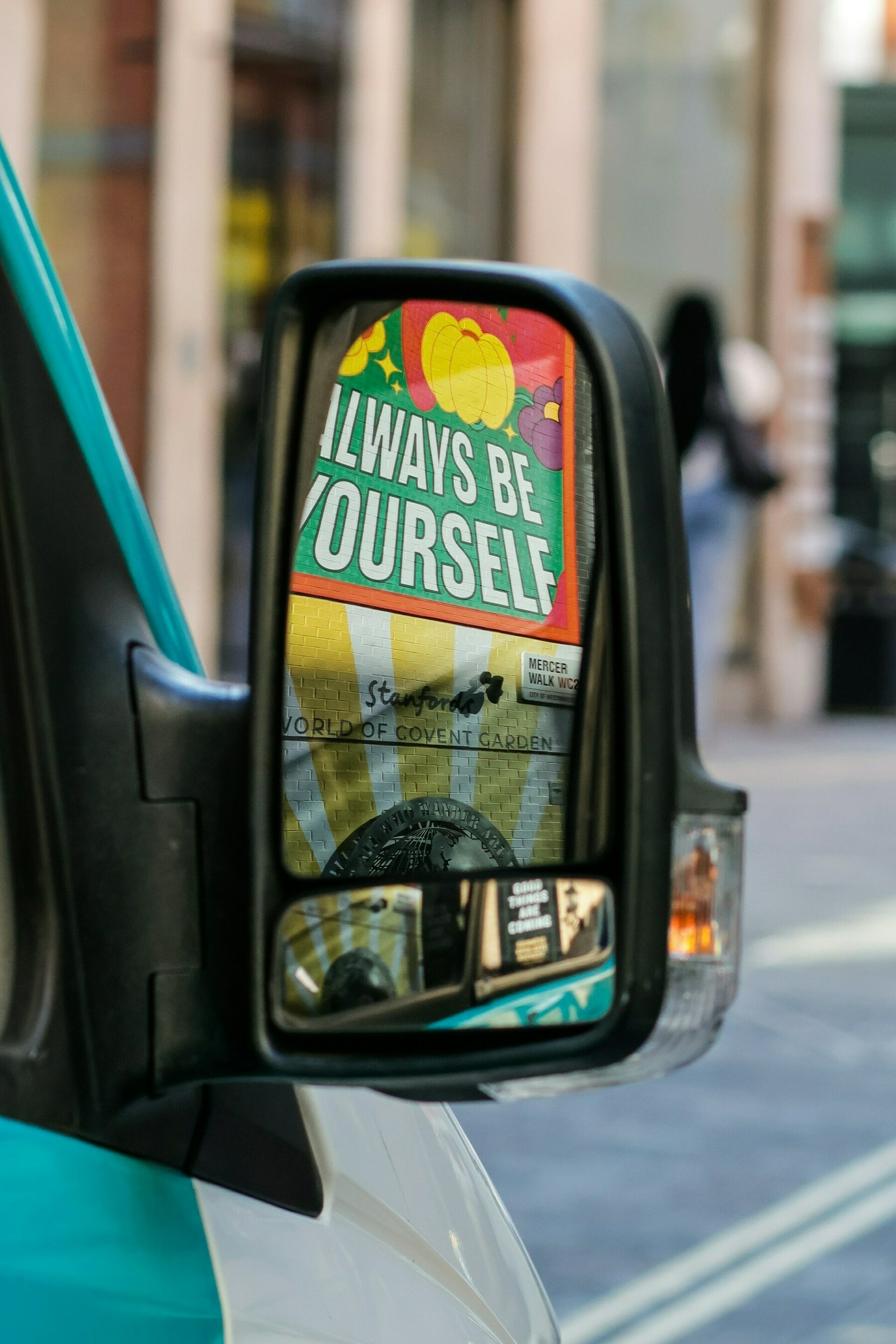
I’m not sure why I’m sharing this post other than it reaffirms my commitment to stay off social networks such as X, Instagram, and TikTok. The suggestions towards the end (use RSS! embrace federated social networks! switch to Linux/GrapheneOS/Signal!) I’ve already embraced, but the thing is that unless a significant minority of people do this, it makes very little difference on the rest of the world, which is effectively powered by algorithm.
Literary theorist Stanley Fish argued that we as individuals interpret any given text (in this case, social media content) “because each of us is part of an interpretive community that gives us a particular way of reading a text.” That interpretive community usually isn’t there when we are fed what the algorithm thinks we’ll consume. We may share something thinking that people like us will see it share their opinions. However, because of the way that algorithms work, engagement is the main driver of a post’s visibility; so here comes 10 million people who have no clue of the context on that thought you shared about your niche interest.
Suddenly your post is full of over-the-top jokes and non-content-related quips from members of a completely random mix of audiences. As the algorithm prioritizes engagement, your post’s new mixing pot of clueless audiences outnumbers the genuinely-interested audience of your own niche corner of the internet (if that even exists anymore), and they comment about everything BUT the content.
Source: tékhnē.dev
Image: Kevin Grieve
I’m pretty confident you only need two things. Feedback and humility, and they work best together.

I was listening to a podcast recently about the concept of “limitarianism” entitled Imagine there’s no billionaires in which the political philosopher Ingrid Robeyns laid out the ways in which, truly, every billionaire is a policy failure. Nobody accumulates great wealth without some sort of dependency on society — whether that’s tax breaks, lack of worker regulation, or some other “pro business” (but anti-society) law.
The truth is that people don’t achieve success by themselves. Luck, nepotism, and cultural capital play a huge part in what most people would deem success. That’s not to say that it’s not possible to increase your serendipity surface, though.
What I like from this post by Josh Swords is that he centres agency in his “career advice” which is achieved by seeking feedback and getting better demonstrating humility and working in the open. Powerful stuff.
I’m pretty confident you only need two things. Feedback and humility, and they work best together. Feedback shows you what to work on, and humility lets you actually hear it.
So find your weakest discipline and work on that. The fastest way is to get feedback from someone you admire and then act on it. Don’t wait for the perfect plan, doing something is almost always better than doing nothing.
Find a mentor, be a mentor. Lead a project, propose one. Do the work, present it. Create spaces for others to do the same. Do whatever it takes to get better.
And do it in the open. A common mistake is assuming work speaks for itself. It rarely does.
But all of this requires maybe the most important thing of all: agency. It’s more powerful than smarts or credentials or luck. And the best part is you can literally just choose to be high-agency. High-agency people make things happen. Low-agency people wait. And if you want to progress, you can’t wait.
Source: people, ideas, machines
Image: CC BY-NC Focal Foto
"You know what this needs? Less safety testing and more venture capital!"
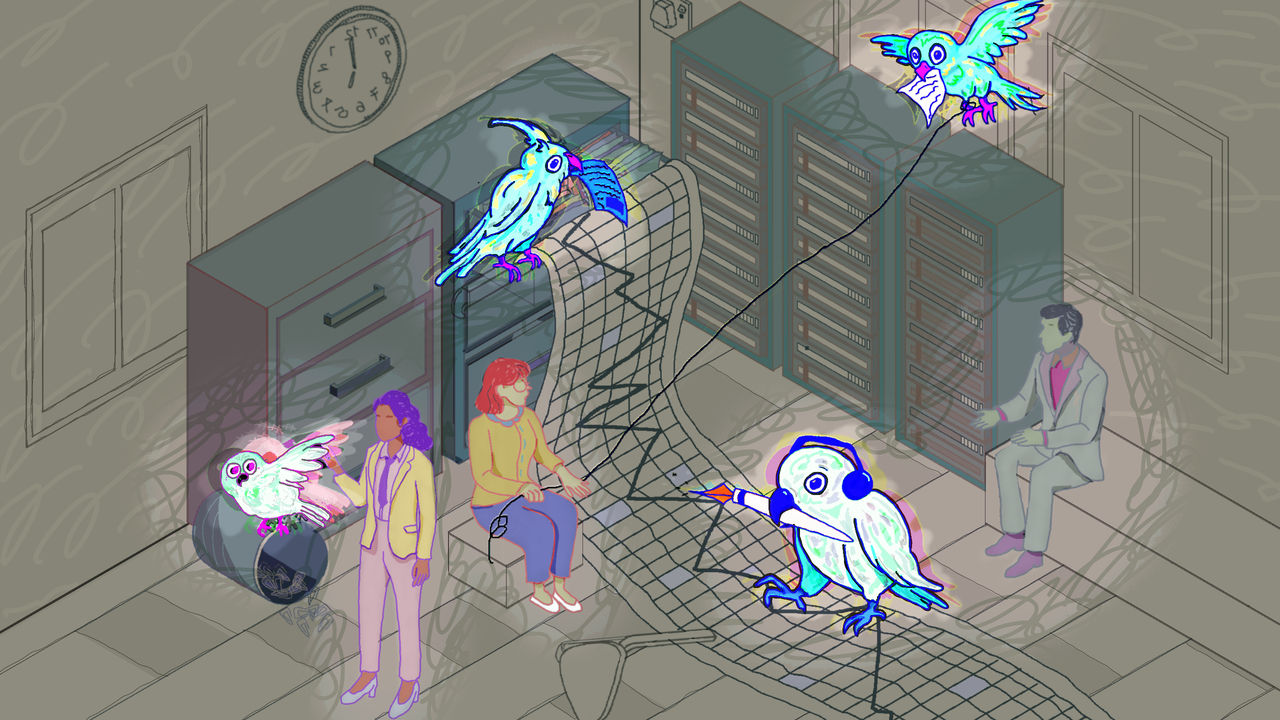
Collected at this site are some absolutely awful uses of AI. Not only in terms of people misunderstanding what technology can and can’t do, but just really bad ideas. For example, Airbnb hosts fraudulently claiming damage via AI-doctored photos, users being able to hack McDonald’s systems by asking for the password, and Microsoft providing ‘therapy’ via LLMs for laid-off workers.
Named after Charles Darwin’s theory of natural selection, the original Darwin Awards celebrated those who “improved the gene pool by removing themselves from it” through spectacularly stupid acts. Well, guess what? Humans have evolved! We’re now so advanced that we’ve outsourced our poor decision-making to machines.
The AI Darwin Awards proudly continue this noble tradition by honouring the visionaries who looked at artificial intelligence—a technology capable of reshaping civilisation—and thought, “You know what this needs? Less safety testing and more venture capital!” These brave pioneers remind us that natural selection isn’t just for biology anymore; it’s gone digital, and it’s coming for our entire species.
Because why stop at individual acts of spectacular stupidity when you can scale them to global proportions with machine learning?
Source: AI Darwin Awards
Image: IceMing & Digit
AI and the future of education: disruptions, dilemmas and directions

A few months ago, UNESCO put a call out under the title AI and the future of education: disruptions, dilemmas and directions. I asked a few talented people I know if they would be interested in working together on a response. In the end, we submitted six separate pieces and then ran an online roundtable. You can see the results here
We published our versions as, after a couple of months, we hadn’t heard anything back from UNESCO. However, last week we heard that they hadn’t included our pieces in the publication because we’d published them. Ah well, they said that they might put together a web page showcasing what we’ve done.
I’m looking forward to reading some of the contributions, which seem to come from quite diverse sources.
This anthology explores the philosophical, ethical and pedagogical dilemmas posed by disruptive influence of AI in education. Bringing together insights from global thinkers, leaders and changemakers, the collection challenges assumptions, surfaces frictions, provokes contestation, and sparks audacious new visions for equitable human-machine co-creation.
Covering themes from dismantling outdated assessment systems to cultivating an ethics of care, the 21 think pieces in this volume take a step towards building a global commons for dialogue and action, a shared space to think together, debate across differences, and reimagine inclusive education in the age of AI.
Source: UNESCO
Image: Yutong Liu & Digit
The hysteresis effect means that practices are always liable to be objectively adjusted too late

I learned the word hysteresis only recently after having a heat pump fitted Chez Belshaw. In that context, it refers to the difference in temperature at which the system turns on and off, creating a lag in response to temperature changes. That’s a good thing in this context, as it helps prevent rapid cycling of the heat pump — making the system more stable and improving overall efficiency.
Hysteresis in other contexts can be less useful, though. A lag in response to changes can be problematic when it comes to technological change affecting certain sectors, for example knowledge workers. I don’t subscribe to Venkatesh Rao’s Contraptions newsletter, but just the part publicly available is thought-provoking.
Inevitably, those who have financial and cultural capital usually catch up and re-assert their authority and dominance. I’ve seen this in practice when universities were threatened by innovations in MOOCs and Open Badges. It was the “end of universities,” apparently. But, of course, already being in a dominant position, and thanks to the catalyst of a global pandemic, we now have unis with more online than in-person students, issuing microcredentials by the million.
I’m not saying that there won’t be ‘casualties’ and that there won’t be new ways of stratifying society. I think we’re already starting to see some of that in terms of text-based communication being a lot less dominant as a means of social communication. I’m just saying that when you’ve got a lot of financial and cultural capital, you have to do a particularly bad job to squander it entirely.
The mark-maker class lives in the gap between the signs and the systems. They comprise those who produce, coordinate, teach, and manage the functioning of symbolic order on the one hand, and those who remix, stylize, dream, and craft the cultural tones in which life is rendered bearable, on the other. These are not two classes, but one diffuse stratum, braided of institutional and aesthetic lives, of spreadsheets and metaphors.
Once insulated by the seeming security of letters and credentials, the mark-makers now find themselves in hysteresis: lagging in the face of an accelerating world that no longer waits for meaning to catch up.
[…]
Bourdieu teaches us that when the field moves faster than the habitus can adapt, a lag sets in. “The hysteresis effect,” he writes, “means that practices are always liable to be objectively adjusted too late, and that habitus tends to lag behind the changes in the field.” This lag is not benign. It is lived as confusion, disorientation, ridicule, even rage. What was once a reliable feel for the game becomes a stale reflex. The mark-makers—who for decades moved with the grain of modern institutions—now find their instincts misfiring. Their ways of knowing, their modes of speaking, their cultivated manners now appear quaint, procedural, indulgent. They are mocked by populists as condescending, and by radicals as co-opted. Worse, they are made redundant by machines that now wield, with eerie fluency, the very tools they mastered.
Source: Contraptions
Image: Logan Voss
Are we decentralised yet?
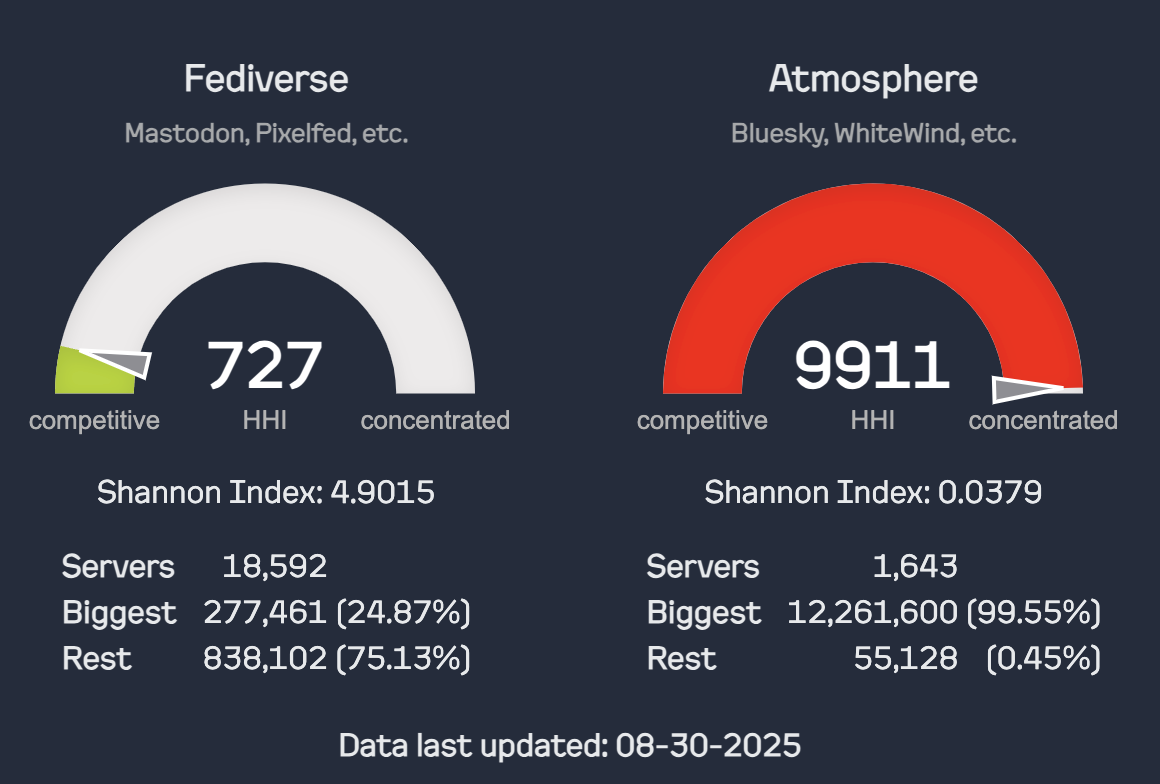
One of the things that I see on repeat in discussions around federated social networks is how decentralised Bluesky is compared with, say, Mastodon. What I like about this site is that a) it’s visual, and b) it tries to use some kind of scientific rationale to compare the two.
So yes, while you can say that Bluesky is decentralised in theory, in practice it’s very much not. Yet, anyway.
This site currently measures the concentration of user data for active users: in the Fediverse, this data is on servers (also known as instances); in the Atmosphere, it is on the PDSes that host users' data repos. All PDSes run by the company Bluesky Social PBC are aggregated in this dataset, since they are under the control of a single entity. Similarly, mastodon.social and mastodon.online are combined as they are run by the same company.
A note about the measurement:
The Shannon Index is an entropy-based measure used in ecological studies. It is computed the same as Shannon entropy using the natural log: the negative sum over all servers of the “market share” times the log of the market share. Lower values indicate lower entropy (a high concentration of one species), while higher values indicate a more even population. In this context, the maximum value is the number of servers, which would mean that all servers have equal population.
Source: Are We Decentralized Yet?
A list of intentions; a poem; the “I want” song; not a bucket list——
I love this idea, a list of wants which, over time, accrete into a kind of “song” rather than a bucket list. Dom Corriveau (who hosts his website on an old Google Pixel 5!) stole the idea from Keenan who, in turn, got the idea from Katherine Yang. Interesting people all.
Source: Dom Corriveau
"Zurich doesn’t want to pool with Jakarta"

In addition to his Just Two Things blog, futurist Andrew Curry also writes at The Next Wave on “futures, trends, emerging issues and scenarios.” In this post which cites investment writer Joachim Klement, Curry talks about sea level rise, with 1.5m being the tipping point. This"sounds fine in theory since the base case IPCC projections are for around a one metre increase by 2100," but that “doesn’t allow for subsidence (often caused by water extraction), or the possibility of cascading climate change.”
The interesting bit for me, though, was the section he entitles “moral hazards” which relate to insurance and government intervention. Basically, the stronger you make coastal defences, the more likely people are to live there.
Hsiao has also done more specific work on Jakarta, which experiences frequent flooding. There are some interesting conclusions here, broadly that a strong government commitment to sea defences (in Jakarta’s case a sea wall) creates a moral hazard, because it
attracts coastal residents, slows inland migration, and lowers the incentives for inland development. The consequence is continued spending on coastal defense and large damages should it fail.
Insurance doesn’t work because places that don’t flood don’t want to pool with places that do (“Zurich doesn’t want to pool with Jakarta”). Alternatives that might place more of the financial burden on people who choose to live in coastal areas might work, but is open to political lobbying. And once you’ve decided to go with sea defences, and people decide to live behind them, you face political pressure to keep on strengthening the sea defences.
Source: The Next Wave
A remarkable 45% increase in solar capacity

While we in the UK have at least one major political party vowing to extract all of the oil and gas out of the North Sea, China has met its renewable energy goals five years early.
Again, while we have arguments about “net zero” and the aesthetics of solar farms, this summer was the hottest on record and hot homes are making children sick. Meanwhile, China is covering entire mountain ranges in solar panels.
It’s a climate emergency. We should act like it.
China broke its own renewable energy record once again in 2024, installing 80 gigawatts (GW) of wind capacity and 277 GW of solar capacity, according to the National Energy Administration, as reported by Recharge News. This marks an impressive 18% growth in wind capacity, now totalling 520 GW, and a remarkable 45% increase in solar capacity, which has reached 890 GW. Combined, these achievements fulfil the 1.2 terawatts (TW) renewable energy capacity target set by President Xi Jinping in 2020 – a goal originally intended for 2030.
[…]
The International Energy Agency (IEA) has previously pointed to China’s advancements as a key factor in keeping the global goal of tripling renewable power capacity by 2030 within reach. Despite ongoing construction of new coal-fired power plants, China’s total power generation saw a nearly 15% increase in 2024, reaching 3.35 TWh.
Source: The Renewable Energy Institute
Image: The Independent